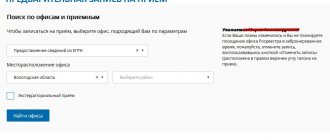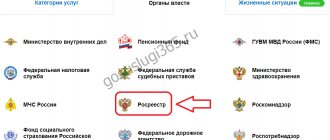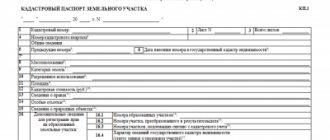Any citizen can easily obtain an extract from the Unified State Register of Real Estate. Fortunately, modern technology allows you to do this via the Internet. All you have to do is visit the website and enter the required data by filling out the fields. Why do you need an extract from the Unified State Register of Real Estate for a land plot, what does it show? It's worth looking into it in more detail.
Changes in legislation
In 2020, one general register was formed in the Russian Federation, combining all the necessary information regarding the cadastre and real estate, as well as the register of owners' rights. This happened after the adoption of Federal Law 218 (as is known, it combined several laws, in particular Federal Law 221). It is worth remembering how previously Rosreestr issued only cadastral passports and separate Unified State Register certificates. Each document was considered a separate paper. Now both have been merged and replaced by a common USRN certificate.
Important: this certificate really summarizes the data, and it contains the most complete data about the specified object.
The only negative is that it is difficult to request data if the property is municipal (not privatized). The State Register does not yet have such data. The sample certificate will not surprise you with its innovations. This is an ordinary document, a standard extract.
What is a USRN extract for a land plot?
Extract from the Unified State Register now = extract from the Unified State Register + cadastral passport.
The document itself is an official certificate containing basic information regarding the owner and the property. For example, a plot of land.
It is necessary when a citizen needs to document the status of the owner. For example, for sale. The buyer must first ensure that the seller is the owner of the property offered for sale. The certificate is issued with a certain date and proves that at the time of the actual issuance of this paper, the citizen indicated there actually owns the property.
In the extract, in addition to the main characteristics of the object, it is stated whether there is any encumbrance. There will also be a mention of whether the specified land is the subject of active enforcement proceedings. Simply put, the certificate can replace (not yet completely) the owner’s certificate.
Important: a significant disadvantage is the time frame. The extract only helps to verify the citizen’s ownership and prove it, only temporarily. It has a validity period that is worth considering. Therefore, the certificate is used for short-term standard operations.
USR extract sample 2020
Below we will look at specific examples of samples of extracts that were received in 2020. On the first sheet of section 1 of the extract from the Unified State Register, the technical characteristics of the apartment are indicated: cadastral number, address, area, purpose, floor number, type of premises “residential”.
For a complete property inspection, we recommend. Only based on an analysis of the information obtained from these 2 documents can a clear conclusion be made: is it worth getting involved with this property or not.
What information is contained in the document, validity period
A sample extract from the USRN for a land plot is a clear and quite visual official document that has several sections. Accordingly, each contains information.
- 1 section. Characteristics of real estate. As is known, citizens are obliged, when purchasing property, to register it. Thus, the data is entered into a unified electronic system, which is then used as a reference book. Here you will see the cadastral number (assigned individually), the address of the object, its actual area and the previously determined cost (cadastral price). In addition, if the real estate is a land plot, then there will be its category, type of use permitted by the state (for SNT, household needs, private construction), recording status and other necessary information with marks.
- Section 2 Data relating to the official owner. First of all, personal information – last name, first name (if an individual), name of the company (individual entrepreneur, legal entity). It also states whether there are any encumbrances on the house or land. If yes, exact date, limitation period with registration number. If, on the contrary, the object was previously confiscated for some state needs, then a brief entry (when, how long the confiscation will last).
- Section 3 General information regarding the site. Where is it located, what are the boundaries, area. Also what the turning points will look like on the ground, their coordinates, and the terrain plan.
As you can see, the certificate is really capable of providing detailed (if possible) information about both the site and the owner. Even the cadastral price (set by a specialist) will be indicated.
Validity period – the unified state register confirms that the extracts it issues are valid for 30 days. The countdown begins from the moment of its actual receipt.
Extract from the Unified State Register and cadastral passport of the land plot: form and detailed content of documents
When performing any actions with a plot of land - receiving a mortgage, selling it, purchasing it, etc., you will have to deal with an extract from the Unified State Register, which replaced the cadastral passport and an extract from the Unified State Register. Previously issued cadastral passports have not lost their validity, but currently the priority is the extract of the Unified State Register of Real Estate. It can be provided in two formats - paper and electronic.
What it looks like now, what its shape is, what is contained inside, what information, what nuances there may be, and what are the differences between an extract on paper and its analogue on a digital medium - we will tell you in the article.
Are they no longer issuing a cadastral passport and an extract from the Unified State Register?
Before 2020, it was mandatory to issue a cadastral passport.
adopted back in 2020, came into force
The changes are designed to improve document flow in the field of real estate registration. For this purpose, the body whose department was responsible for issuing the cadastral passport was abolished. Now it is enough just to issue a new USRN extract.
How to read a passport and what is its content?
The internal contents of the passport are divided into several blocks. Each of them carries significant information. To obtain the necessary information, it is important to understand their structure.
The first section includes general data:
- a unique cadastral number (we provided information on how to obtain such a number in a separate publication, and here we talked about how you can check its availability);
- land area;
- category of land;
- where the site is located;
- permitted use;
- type of land right;
- when the document was issued;
- when he was registered with Rosreestr.
All information is contained in a table, where each column contains certain information. For example:
- columns 7 and 14 are the location of the site;
- columns 12 and 13 – explanations of the cadastral value of land in accordance with the total area and unit cost of each sq.m in the array;
- column 15 includes data on ownership of the plot - who is the owner, a document certifying ownership (for example, “shared 1/2” - the plot has two owners);
- Column 18 contains information about the registration numbers of the site that were previously assigned to it.
What does a cadastral passport for a land plot look like in the photo:
The second section includes a configuration diagram of a plot of land. It is a solid line that outlines the boundaries of a site on the ground surrounded by other objects. The diagram is carried out in accordance with the scale indicated on the plan page.
The third section is filled out only in the case of encumbrances with an easement or mortgage on part or the entire plot. If there are no such encumbrances, then no information is entered. We talk here about whether it is possible to find out about the presence of arrests and encumbrances on a plot, knowing only its cadastral number.
Sections four and five are filled with data on the location (coordinates) of the boundary boundaries of the land and the turning points at which these boundaries were marked.
Description of the document
By Order No. 975 of the Ministry of Economic Development, a form for the Unified State Register of Real Estate (USR) extract on cadastral value was developed. It reflects the current price for a real estate property, established by the competent government agency (we talked about whether it is possible to challenge the amount of this value, and how you can try to reduce this established price, we talk about in a separate article).
The statement form has several sections, each of which reflects its own parameters.
Important. A separate extract is issued for the land plot. If there are any structures or buildings on the land, then a separate document will be issued for each of them.
Issued on a sheet of paper with all the data that must be present in accordance with Order No. 975, certified by the blue official seal of the issuing institution and signed by the responsible person.
What information is contained in the sections?
The USRN extract, depending on the form, may reflect several sections that give a complete picture of the property based on publicly available data. They reflect:
- technical characteristics of the object;
- real rights;
- location of the plot (is it possible to find out such information about the plot and find its address, knowing only the cadastral number of the land plot, find out here);
- location of real estate;
- schematic location of the object.
The first section “Information about the main characteristics of the property” includes:
- what type of real estate is (“building”, “structure”, “premises”, etc.);
- square;
- date of assignment and cadastral number;
- address;
- cadastral quarter number;
- main characteristic (for the “structure” type) – shows the volume, length, height and other technical characteristics of the property;
- percentage of completion of the object and its designed purpose (for unfinished construction);
- appointment;
- Name;
- total number of floors (basement floors are indicated in the line provided for this);
- number of storeys of the object;
- category of residential premises;
- year of commissioning and completion of construction work;
- ruble equivalent of cadastral value (size of a specific object);
- other assigned cadastral numbers (for real estate objects on the territory of the land plot, component objects of the enterprise's real estate complex, premises, and parking spaces within the development boundaries);
- category of memory and type of its use;
- whether the object is included in a specialized fund, or whether it has a special purpose;
- what status is assigned to the record;
- special marks;
- who is the recipient?
The second section reflects information about copyright holders: data of an individual (where and when of birth, full name, nationality, SNILS) or legal entity (name and TIN).
If you need to obtain information on owners before 1998, you should send a request to the BTI.
- date of state registration, assigned number and type of right;
- documentary basis of rights (purchase/sale agreement, deed of gift, etc.);
- restrictions (encumbrances) of rights (seizure, pledge) or their absence;
- adopted state or municipal decisions to confiscate an object;
- availability of data on the registration of the right by a government authority or a third party in the absence of consent.
Whether it is possible to find information about the owner by cadastral number, you can find out here.
The third section includes a schematic plan of the land plot (done “by hand”, using technology), which reflects the objects on the ground necessary to establish boundaries. What such a plan looks like and how to read it correctly, you will learn from this publication.
The fourth section, in addition to the cadastral number in the format “cadastral district, district, block, plot number,” contains a diagram of the object reflecting the scale relative to other real estate objects.
The fifth section includes the cadastral number and location diagram. The diagram should reflect the symbols of a specific object and a graphic representation of the boundaries:
- premises;
- windows;
- doors;
- stairs;
- walls
Indicate scale. Signed by the full name of the leading technologist.
Special marks
In the first section of the Unified State Register of Real Estate in “Information on the main characteristics of the property” there is a point “Special notes”. They are assigned in the following cases:
- There is no data on the coordinates of the borders - it is set to o.
- The object is classified as the joint property of all owners - marked o.
- If in the same section of the extract the object, site or building was assigned the status “current”, then o.
extracts from the Unified State Register of Land Registers for the land plot
Difference between electronic and paper version
Attention. The electronic USRE extract reflects the information that was previously contained in the extract from the USRE and the cadastral passport.
The electronic version has some differences from the paper form of the statement:
- Method of providing information.
- The electronic version is an archive of several files - the extract itself with the .xml extension, a digital signature confirming the authenticity of the extract with the .sig extension. Not valid when printed on paper.
- The paper version is endorsed by the signature of the responsible civil servant and a blue seal.
- A diagram (plan) of the object is available only in the paper version of the extract.
An extract from the Unified State Register of Real Estate is a document that reflects extensive data about a real estate property. The information is structured into blocks and is provided in paper form or on digital media in the form of an electronic document. Both documents have legal force, but have some differences.
The procedure for filling them out, the information that will be reflected in them, and the form of submission are regulated on December 25, 2020 in the Order of the Ministry of Economic Development of Russia “On approval of extract forms...” No. 975.
Source: https://pravoved.online/kadastrovyj-uchet/pasport-i-vypiska-iz-egrn-na-zu
Why get it?
It is already clear that the presence of an extract helps a citizen sell property to someone. The document allows the buyer to study the basic data about the property being purchased - cadastre number, area, etc. And most importantly, the person offering him the deal is an honest taxpayer, not an intermediary or a fraudster.
Why else is a USRN certificate required? It is considered a single official document that can confirm for a citizen his status as an owner.
Required for:
- When it is necessary to confirm the fact of the transfer of a thing from one former owner (or several) to others (buyers) of property rights to the specified object. The basis is a signed sales agreement.
- A citizen plans to get a loan, and the bank requires confirmation of the availability of real estate that can be used as collateral.
- It is necessary to clarify the basic cadastral data relating to real estate. For example, when the parties plan to buy or, conversely, sell a building (any other real estate), they need to fill out all the details of the object being sold.
Important: it is worth remembering that the USRN certificate has a limited validity period. Therefore, it is better to order it at the right moment. It was not for nothing that the legislation established 30 days, understanding that most property transactions are a long process.
What information is stored in the Unified State Register of Real Estate?
The extract from the Unified State Register contains:
- Object name;
- its characteristics: area, cadastral value;
- location: full address, locality, building, floor 1 if we are talking about an apartment;
- cadastral data;
- information about the copyright holder;
- information about encumbrances, for example, if the object is pledged, this fact will be reflected in the statement.
Important! You can obtain an extract on the transfer of rights to the object. Such an extract will contain the history of the object: the names of all its copyright holders, the dates of registration of their rights and the grounds for registration.
How to order an extract from the USRN for a land plot, methods
It is interesting that not only the owner himself, but any other interested person has the right to order a USRN certificate. Even if he himself is a non-resident of the Russian Federation and wants to view a property that actually belongs to another person. Thus, people who decide to purchase a plot of land they like can find out the basic information openly in advance, without involving the seller.
You can get help in 2 ways:
- Normal mode. Order an extract for a land plot (or other real estate) through Rosreestr, MFC or the registration chamber. Visit a local institution in your area or city.
- Online mode. Modern technologies have made it possible to facilitate and expand opportunities for citizens to obtain the necessary certificates. Moreover, the cost will be the same.
The processing time is approximately 3 days, but you still need to look at the delivery method. If by mail, the action will take longer.
Examples:
- through the MFC there will be 5 days (working days only);
- through Rosreestr or the State Services portal it will be 3 days;
- accelerated option - if a citizen indicates some compelling reason for acceleration, then the certificate will be sent faster, within a day or a few hours.
Cost of obtaining an extract from the Unified State Register of Real Estate
Obtaining an extract from the Unified State Register for an apartment - read more here. How to get an apartment card - .
Is it possible to revoke a deed of gift for an apartment?
The service for producing this extract is provided to citizens and enterprises on a paid basis. The cost of the state fee required to pay depends on the status of the applicant, the type of document and the information it contains.
Thus, the fee ranges from 400 to 1,500 rubles for a paper statement prepared for individuals.
Citizens who decide to issue an electronic version of the document are obliged to pay a fee ranging from 250 to 700 rubles. The cost of the fee for organizations and firms is significantly higher - from 500 to 2950 rubles (depending on the type of document and the information contained in it).
Procedure for ordering an extract, cost of receipt
To begin with, the citizen chooses the order option that is acceptable to him.
Standard (through a specialized government agency). He will need to find out the address of the desired institution and take the following documents:
- passport;
- title documents (linking it to property);
- a check issued after payment of the mandatory state duty;
- statement;
- boundary plan;
- additional papers (if there is an encumbrance).
Then he visits the MFC or another authorized organization with them, leaves an application and submits documents with it. After examining them, the specialist takes some of them, the rest is returned to the citizen.
Later, the applicant is notified that the certificate is ready for him and can be collected.
Upon receipt, he signs in a special book, confirming that he took the paper (not required everywhere).
Online registration
A citizen opens the website of Rosreestr or MFC. There he fills in all the required fields and sends scans of documents. Payment of state duty is also required. The online mode provides 2 separate types of certificate: paper or electronic.
Important: if it is not the owner, but another interested party who applies, there are restrictions on the release of information.
The public service is paid, a form from the Unified State Register (without coordinates) will cost:
- individuals (ordinary citizens) – 400 rubles;
- legal entities (IP) – 1100 rubles.
If you need a complete one, with coordinates, then:
- individuals (ordinary citizens) – 750 rubles;
- legal entities (IP) – 2200 rubles.
There is also a state duty (commission) of 30-50 rubles.
The certificate can be issued standard (paper document) or electronic, but the latter will no longer have coordinates. And the price is different - 250 rubles (individuals), 700 rubles (legal entities). Plus commission.
What is a USRN extract and how to get it
If a person needs information about a real estate property, he can obtain it from the register by ordering the appropriate extract.
The extract in tabular form contains all the necessary information about the object. This document is necessary in many life situations:
- when drawing up any agreement involving the transfer of ownership from one person to another: purchase and sale or donation;
- when registering rights to property during inheritance;
- when applying for benefits associated with owning real estate, for example, subsidies for utility bills;
- when resolving legal disputes in connection with property;
- when applying for a loan secured by property.
This is an incomplete list of situations in which the need for an extract from the Unified State Register may arise. Extracts became relevant when the issuance of certificates of ownership of real estate was cancelled. An extract from the Unified State Register of Real Estate has become the main document certifying a person’s rights to an object.
You can receive an extract in several ways:
- by contacting Rosreestr directly;
- by contacting Rosreestr through the MFC;
- using online resources: the State Services website, or using the online service on the Rosreestr website.
Important! The extract can be provided in the form of an electronic document or on paper.
Before ordering one or another version of the statement - paper or electronic, it is necessary to clarify the requirements of the person to whom this statement will be provided later. In some cases, it is allowed to provide only a paper extract with a “live” seal of the issuing authority.
Important nuances
In principle, obtaining a certificate is considered a simple and accessible procedure that does not involve any special costs. Of course, it is more expensive for individual entrepreneurs, but this is already a cost of status. Moreover, anyone can actually order it, even if he is in fact a non-citizen of the Russian Federation.
The only thing is that there are restrictions for non-owners:
- the date the owner submitted the application for the necessary registration (when exactly the object was registered) in the cadastre;
- the date of filing the necessary application for subsequent registration of his rights as an owner;
- content of basic title documentation;
- general data of the remaining real estate assigned to this citizen (whose information is contained in the certificate issued upon request);
- a copy of the documentation serving as the basis for granting property rights to the citizen;
- information regarding the legal capacity of the owner.
However, in practice, the remaining data in the certificate is enough for the bank and the potential buyer. It’s important for them to make sure that the owner’s identity is real.
It turns out that anyone can only obtain certain information about one property they have chosen. If the citizen indicated by the owner there has something else, it will already be classified information.







